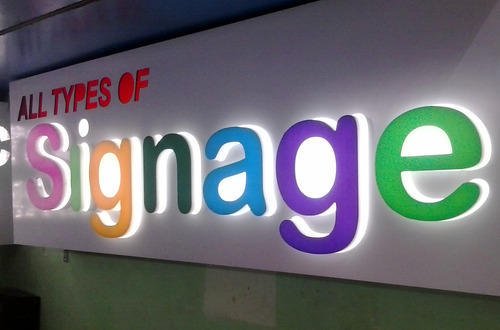

In the bustling and competitive market of Nigeria, businesses strive to make their brands stand out. With numerous advertisements vying for consumer attention, how can your signage break through the noise and truly captivate? The secret lies in one essential element: knowing your audience and standing out with an exceptional signage.
Understanding your audience is not merely a step in the signage design process; it is the cornerstone of an impactful and successful campaign. Whether you’re targeting the energetic streets of Lagos or the serene neighborhoods of Jos, tailoring your signage to your audience’s habits, preferences, and needs can make all the difference and can make you stand out. This guide will explore why knowing your audience is critical and how to effectively leverage this knowledge to create compelling signage that drives results and makes your brand stand out.
Signage is more than just words and visuals; it’s about creating a connection. People respond to messages that resonate with their lives, interests, and experiences. By understanding your audience, you can craft signage that feels personal and engaging, increasing the likelihood of capturing their attention, driving action and standing out.
A sign has only seconds to communicate its message. Misaligned messaging or irrelevant visuals can result in wasted opportunities. Knowing your audience ensures that every second counts, delivering clear and concise messages that align with their expectations and context.
Effective signage doesn’t just attract attention; it converts interest into action. Investing in audience-specific design reduces wasted ad spend and maximizes return on investment (ROI). With targeted messaging, your signage works smarter, not harder.
Begin by identifying the basic characteristics of your audience:
Dive deeper into your audience’s interests, values, and lifestyle:
Location matters when crafting signage. Urban audiences may appreciate vibrant, high-energy designs, while rural areas might respond better to simple, relatable visuals. Research the local environment to align your signage with the community’s vibe.
Analyze how your audience interacts with similar brands or campaigns. What catches their attention? What prompts them to act? Behavioral insights can refine your approach and ensure relevance.
The language you use sets the tone for your message. For instance:
Visual elements play a significant role in engaging your audience:
Focus your message on your audience’s priorities:
Identify spots where your audience is most likely to encounter your signage, such as busy intersections, shopping malls, or public transportation hubs.
Directional signage can guide customers directly to your location. Place signs strategically within a 5-kilometer radius of your business for maximum impact.
Tailor your signage to events that attract your target audience. For instance, place advertisements near stadiums during sporting events or near schools during back-to-school campaigns.
A retail chain wanted to attract millennials in Lagos. They conducted surveys to understand preferences and found that this group values trendy designs and affordability. The resulting signage featured vibrant colors, modern fonts, and taglines like “Style Meets Savings.”
An agricultural supplier targeted farmers in Northern Nigeria. Their signage used local language, depicted relatable images of farmers, and included clear directions to their store. This approach fostered trust and significantly increased foot traffic.
Directly ask your audience about their preferences and behaviors.
Platforms like Instagram and Facebook offer insights into your followers’ demographics and interests.
Use tools like Google Maps or local traffic studies to identify high-visibility areas.
Study competitors’ successful signage campaigns for inspiration and benchmarking.
Advancements in technology enable hyper-personalized signage, such as digital boards that adapt messages based on time of day or audience demographics.
Touchscreens and augmented reality (AR) create immersive experiences, increasing engagement.
Eco-friendly signage materials resonate with environmentally conscious consumers.
Knowing your audience is not a one-time effort but an ongoing commitment to understanding and serving their needs. By tailoring your signage’s design, message, and placement to your audience, you can create a powerful tool for driving visibility, engagement, and conversions.
At Signfix Industrial Limited, we specialize in crafting customized signage solutions that connect with your audience and deliver results. Whether you’re targeting a bustling urban crowd or a niche rural market, we have the expertise to bring your vision to life.
Let’s work together to create signage that speaks directly to your audience. Contact us today to get started!

5 Powerful Ways Signage Empowers Self-Service Customers and Enhances Satisfaction

5 Surprising Ways Quality Signage Can Transform Your Business in

7 Emotional Triggers Your Signage Should Tap Into (If You

10 Crucial Things You Must Know About Signage Laws in
100% Original products that covered warranty by the vendor.
You have the right to return your orders within 30 days.
Your orders are shipped seamlessly between countries.
Your payments are secure with our private security network.